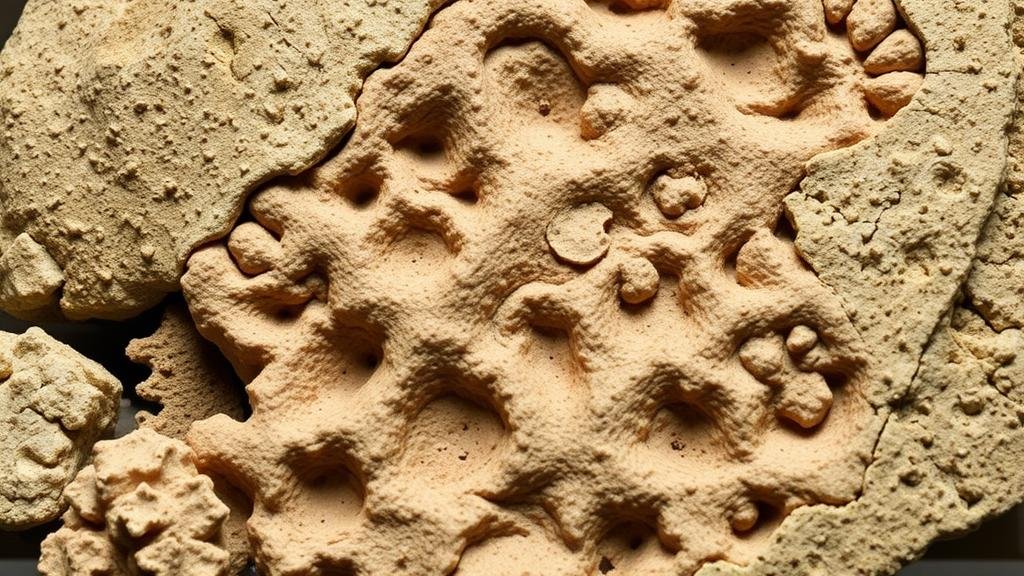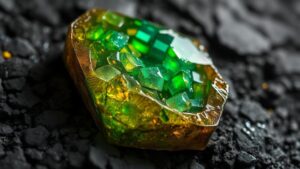Coral Reefs of Stone: Fossilized Tropical Habitats Preserved in Time
Coral Reefs of Stone: Fossilized Tropical Habitats Preserved in Time for Rockhounds and Mineral Collectors
Coral reefs, often regarded as the rainforests of the sea, occupy less than 0.1% of the oceans surface but support an impressive diversity of marine life. Interestingly, these vibrant ecosystems leave behind fossilized remnants known as coral stone, which provide valuable insights into ancient environments and can be of great interest to rockhounds and mineral collectors. This article delves into the composition, formation, and significance of these fossilized tropical habitats, illuminating their relevance in geology and mineralogy.
The Formation of Coral Reefs
Coral reefs are primarily formed from the calcium carbonate structures secreted by corals, which are marine invertebrates related to jellyfish and sea anemones. e structures grow over thousands of years, creating a complex and dynamic habitat that houses numerous species. The following conditions are crucial for healthy coral reef formation:
- Warm water temperatures, typically between 20-30 degrees Celsius (68-86 degrees Fahrenheit)
- Shallow, clear waters that allow sunlight penetration
- Low nutrient levels, which help maintain coral health
During their lifecycle, many coral species eventually die, leaving behind skeletons made primarily of calcium carbonate. Over geological time, these skeletons can become sedimentary rock, known as limestone, which is the most common type of coral fossil.
The Significance of Fossilized Coral Reefs
Fossilized coral reefs offer a window into Earths geological and climatic history. can be used to understand past marine environments and to identify changes in sea levels and temperatures. Notably, the study of coral fossils has revealed data on temperature fluctuations over millions of years, offering insights into climate change patterns.
For example, researchers examining fossilized corals in the Bahamas have identified that during the Eemian interglacial period (approximately 130,000 to 115,000 years ago), sea levels were about 6-9 meters higher than present-day levels. Such findings are significant in the current context of global warming and rising sea levels.
Types of Fossilized Coral Stone
Mineral collectors may encounter various types of fossilized coral in their pursuits. Recognizing the different types can significantly enhance both appreciation and value. Key varieties include:
- Fossilized Stony Coral: This type includes various genera such as Acropora and Porites. Their structures resemble knobby and branching forms, typically found in various colors from beige to brown.
- Fossilized Tabular Coral: Often flat and plate-like, these corals provide a unique aesthetic and are usually preserved in extensive layers.
- Fossil Coral Agate: A beautiful gemstone formed when silica replaces the original calcium carbonate, resulting in vibrant patterns and colors.
Practical Tips for Rockhounds and Collectors
For rockhounds and mineral collectors interested in acquiring fossilized coral, here are some practical tips to enhance your collection:
- Location Matters: Coral fossils can be found in sedimentary rock formations worldwide. Notable locations include the Florida Keys, the Bahamas, and parts of the Mediterranean.
- Check Local Laws: Always ensure that collecting fossils is permitted in your chosen area. Some regions have strict regulations concerning fossil collection.
- Join a Community: Engaging with local rockhounding clubs or online fossil forums can provide valuable insights and opportunities for collaboration.
- Invest in Safety Equipment: Ensure you have the proper tools and protective gear when collecting, such as hammers, chisels, and safety goggles.
Conclusion: The Importance of Coral Reefs and Their Fossils
Fossilized coral reefs are more than just geological curiosities; they serve as crucial indicators of environmental changes and climate history. For both collectors and scientists, these ancient tropical habitats preserved in stone offer a unique perspective not only on Earths past but also on its potential future. Enthusiasts can play a vital role in appreciating, preserving, and studying these natural wonders, making a positive impact on understanding our planets intricate systems.
By exploring the rich tapestry of fossilized coral, rockhounds and mineral collectors not only acquire a beautiful collection but also contribute significantly to the ongoing dialogue about marine conservation and our changing climate.



